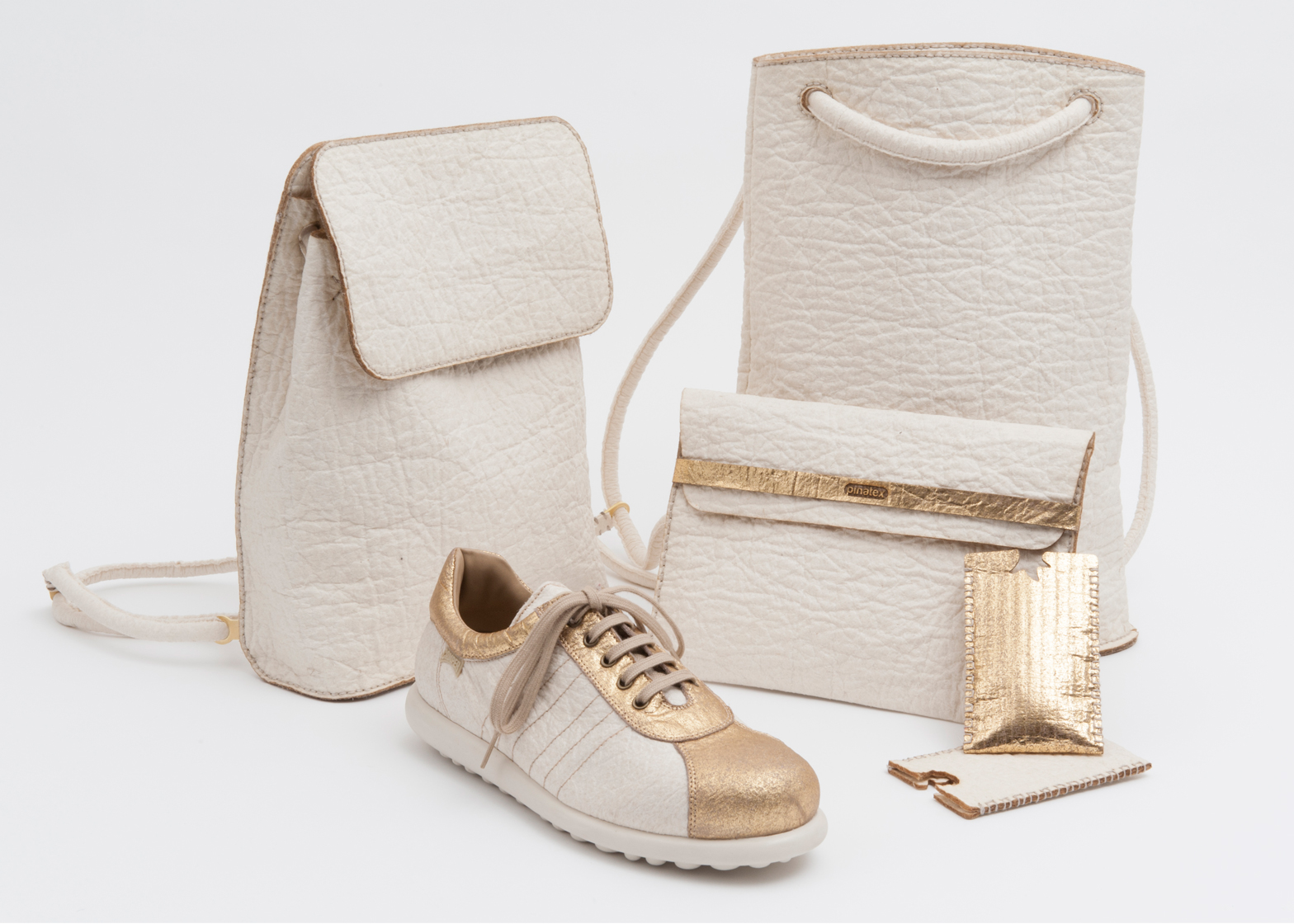Pineapples, Kelp & Plastic Bottles: Eco-Friendly Materials To Know

Share This Article
| All products featured on The Wellness Feed are independently selected by our editors for its environmental and ethical impact. However, when you buy something through our retail links, we may earn an affiliate commission. |
How can we make fashion better? For some companies the answer lies in reducing virgin plastic with plant-based or recycled materials. When you hear the words ‘plastic pollution’ water botltes or bags might immediately come to mind. But, fast fashion in particular relies on virgin plastic. Surveys have shown that over the last few years 88% of clothing produced by fast fashion brands is been made from virgin plastic-based materials like nylon or polyester. These fabrics not only contribute to the use of an estimated 342 millions of barrels of oil yearly but also the 5.25 trillion pieces of microplastic pollution.
In respsonse to fashion’s plastic pollution problem, some companies are developing alternative materials sourced from nature and the source of pollution itself. As new materials it might take awhile until they’re readily available on the market. But, some brands have taken the bold step to release limited edition collections with these materials that you can view now for a sneak peek at what the future of eco-friendly materials will look like. And, this guide will give you a peek into the materials and the company that are using them.
AlgiKnit: Kelp
Company: Algiknit is a company focused on developing renewable yarns sourced from kelp. These materials hold promise for being regenerative and a more sustainable alternative than plastic-based polyester or nylon yarns.
Material: Algiknit has crafted a biotextile from kelp, a macroalgae, that is the fastest-growing organism in the world. Reaching a daily height of 36 inches it even outgrows the world’s fastest-growing plant, bamboo, which only reaches 24 inches. Unlike bamboo, kelp is harvested from coastal waters, so that it doesn’t require the fertilizers, pesticides, or other upkeep that is usually required for land plants. Kelp simply grows as nature intended. And, as it grows it cleans. Kelp has the unique ability to absorb CO2 in the atmosphere. Another reason that it’s a winning eco-friendly material is it can absorb 5x more CO2 than land plants.
Brands: In 2018, Nike debuted a compostable sneaker made from an AlgiKnit kelp textile.
Piñatex: Pineapple Leaves

Company: Ananas Anam is the company that makes Pinatex. The certified B Corp has been a journey to create the sustainable material since founder Dr. Carmen Hijosa noticed the impact from the leather industry ini the 1990s.
In making Piñatex, 264 Co2 tons are saved by using instead of burning 825 tons of waste leaves from the pineapple harvest – the burning of which would release the equivalent of 264 tons of CO2 into the atmosphere.
This is equivalent to charging more than 33 million smartphones.
Material: Every year 13 million tons of waste is produced from the pineapple agriculture industry. Piñatex takes that waste – the unedible plant leaves- and turns it into a non-woven textile that can be used in place of traditional leather or PVC textiles. Suddenly, what would otherwise be discarded or burned becomes a part of a circular economy that produces a minimal environmental impact. Parts of the leaves that aren’t used in the production of Piñatex become fertilizer to further fuel a zero-waste environment. The end result is a durable, luxurious textile that is cruelty and toxic-free.
Brands: Hugo Boss and the handbag line Maniwala have made Piñatex ‘leather’ accessories.
Repreve: Plastic Bottles
Company: Billions of plastic water bottles pollute our environment yearly- either by landfills, land waste or ocean pollution. Unifi, the company that makes repreve aims to change that by cleaning up our oceans and shores and finding a second-use for these materials.
Material: Repreve has recycled billions of plastic bottles and that number is continually growing. That’s a billion bottles that won’t land in landfills or clog our oceans. Repreve uses innovative techniques to craft polyester threads from materials that we already have. What was once trash is cleaned, melted, cut, and spun into regenerated materials. The end result is a material that is durable enough for shoes, backpacks and swimwear.
Brands: In 2017, Mara Hoffman introduced Repreve into its swimwear collections.
FLWRDWN: Wildflowers

Materials: Traditional puffer coats are stuffed with down feathers acquired through a process that is fatal to animals. Vegan alternatives are often petroleum-based microplastics that leak into the oceans after washing and once thrown away in landfills. FLWRDWN offers a biodegradable and vegan solution. Wildflowers are carefully sourced from areas that contribute to habitat restoration. They are harvested from nature, rather than grown as a crop in an effort to preserve groundwater. The end result is a coat that can withstand sub-zero temperatures with biodegradable eco-friendly materials.
Bananatex: Bananas

Company: Thanks to Bananatex banana plants are now turned into a durable and waterproof fabric that can replace polyester.
Material: As part of the natural ecosystem, stalks of banana plants are harvested yearly since they can fully regenerate within 1 year. Chemical treatments aren’t used on the stalk during harvesting and leaves are left on the forest floors to decompose into a natural fertilizer. The stalk is then turned into a yarn that is dyed using natural methods that meet the Oeko-Tex Standard 100.
Brands: The Swiss lifestyle brand, Qwstion, uses Bananatex in its range of backpacks, pouches, and other accessories.
